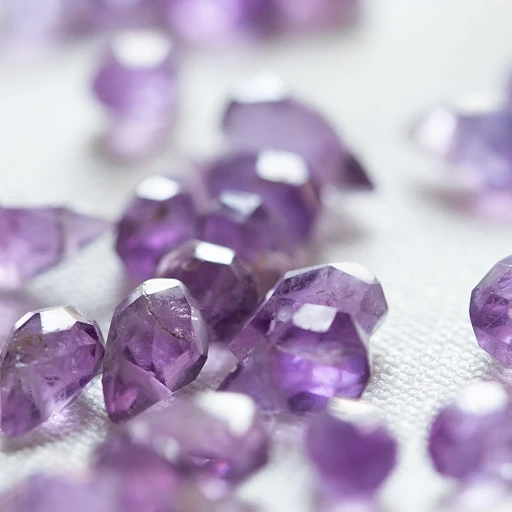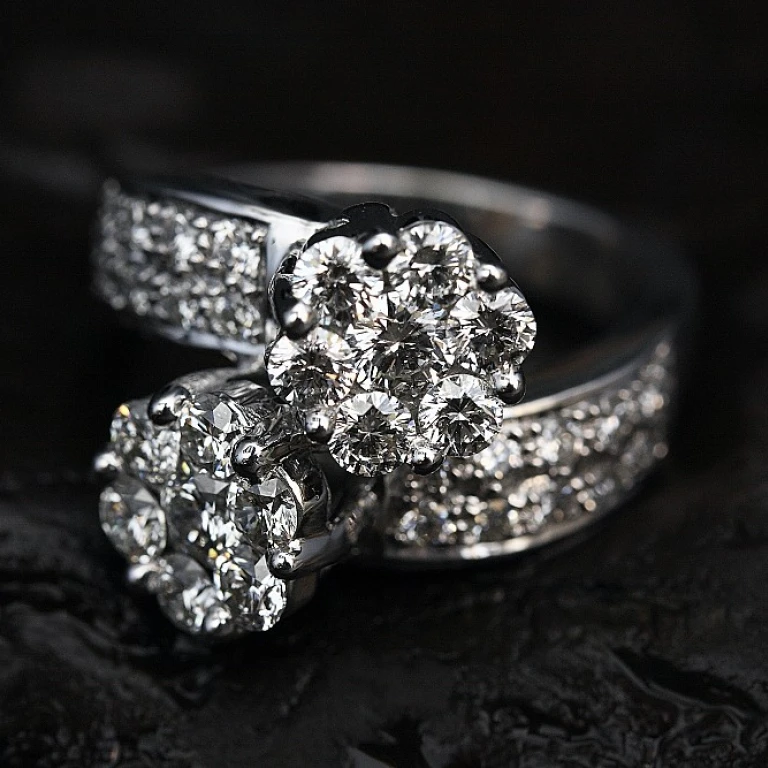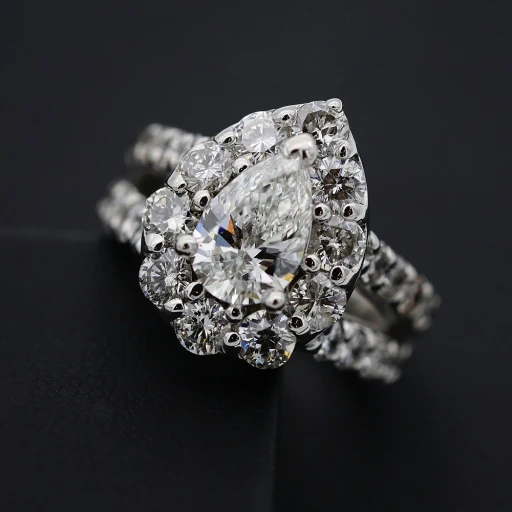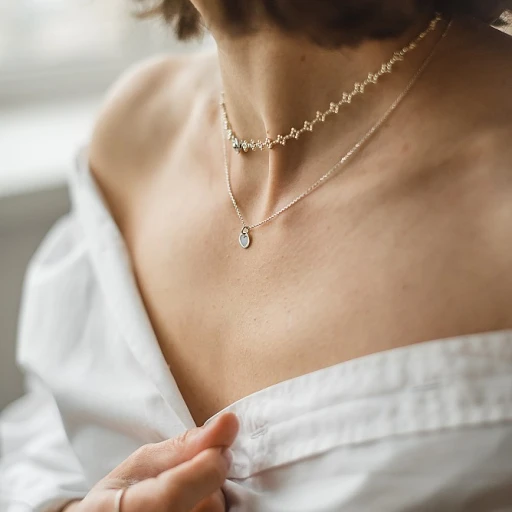
The Rich History of Sapphires
Unveiling the Historical Tapestry of Sapphires
The allure of sapphires transcends mere aesthetic appeal; it is deeply entwined with history and culture. As one of the four major precious gemstones, sapphires have been cherished throughout civilizations. Ancient Persian tradition held that the earth rested atop a giant sapphire, giving the sky its blue hue. Such legends reflect the intrinsic value placed on these gemstones across cultures. The word "sapphire" itself is derived from the Latin "sapphirus" and Greek "sappheiros," which simply mean blue, highlighting the color most traditionally associated with this gemstone. Yet, sapphires present a plethora of hues beyond blue, which we'll delve into later. In addition to myth and nomenclature, sapphires have historically symbolized nobility, truth, and faithfulness. Prominent figures and royalty have favored them in their regalia due to their reputed protective powers and exceptional brilliance. For instance, sapphires adorned the crowns and jewels of royal dynasties, serving as enduring emblems of power and status. With advances in gemology, sapphires have taken on innovative roles within the fine jewelry industry. The enduring appeal and myriad of colors have ushered in a modern renaissance of these remarkable gemstones. To explore the marvel of lab-created sapphires that are captivating contemporary audiences, you can visit an insightful article on lab-created sapphires. This technology not only makes sapphires more accessible but also opens new artistic avenues for fine jewelers.Understanding the Spectrum of Sapphire Colors
Exploring the Kaleidoscope of Sapphire Shades
When one thinks of sapphires, the mind often drifts to the deep, velvety blues that have graced royal jewelry for centuries. However, the world of sapphires is much more vibrant and diverse. Sapphires are part of the corundum family and can be found in virtually every color except red, which is classified as a ruby. Distinctive hues are attributed to varying trace elements present during the gemstone's formation. For instance, iron and titanium create the classic blue sapphire, while the presence of chromium leads to pink sapphires. Green sapphires, less common but equally stunning, owe their color to a combination of iron and other trace elements. For those who want to make a bold statement, the Padparadscha sapphire offers a rare blend of pink and orange. This unique color is highly prized among collectors and connoisseurs, often commanding premium prices due to its rarity. In the realm of fine jewelry, each color of sapphire holds different meanings and significance. Whether you are drawn to the mysterious allure of a green sapphire or the soft charm of a pink one, the possibilities are limitless. By understanding these natural variations, one can truly appreciate why sapphire jewelry remains a timeless favorite. Dive deeper into the fascinating range of colorful sapphires by exploring the allure of sapphire jewelry across different cultures and eras, offering rich insights into their enduring appeal.The Art of Crafting with Sapphires
The Creative Process Behind Sapphire Creations
The journey of transforming raw sapphires into exquisite fine jewelry pieces is a testament to the expertise and craftsmanship involved. Each piece tells a story, beautifully encapsulating the rich history and wide range of colors sapphires offer.Master artisans and skilled jewelry designers harness their talents to shape these stunning gemstones, ensuring that each sapphire maintains its unique allure. This process involves:
- Designing: Every piece begins with a vision. Designers consider the sapphire's innate color palette and clarity before sketching ideas that will showcase its brilliance.
- Cutting and Polishing: Precision is key when cutting sapphires. Cutting determines how light interacts with the gemstone—maximizing its vibrant hues and sparkles. After cutting, meticulous polishing enhances the stone's sheen.
- Setting: Whether a ring, necklace, or bracelet, the setting must complement the sapphire's allure. The mounting can either highlight the stone's beauty or be a magnificent part of the total design itself. This is where creativity shines, often blending traditional techniques with modern trends.
The combination of artistic vision and technical skill ensures that each sapphire piece is not only a piece of jewelry but also a wearable work of art. For a deeper dive into the exquisite craftsmanship involved, explore luxurious jewelry craftsmanship that shares similar journeys in transforming fine gemstones into captivating adornments.
Evaluating Sapphire Quality
Key Factors in Assessing Sapphire Quality
When it comes to evaluating the quality of sapphires, several critical factors come into play. These elements not only determine the gemstone's beauty but also its value in the market. Understanding these can help you make informed decisions when adding to your jewelry collection.
Color and Its Impact
The color of a sapphire is perhaps the most significant factor in determining its value. While blue sapphires are the most well-known, the gemstone comes in a spectrum of colors, including pink, yellow, green, and even the rare color change varieties. The most prized sapphires exhibit a vivid, intense hue with even color distribution. For instance, a deep blue sapphire from Sri Lanka or a unique teal Montana sapphire can command a high price.
Clarity and Inclusions
Clarity refers to the presence of inclusions within the gemstone. While some inclusions are expected, especially in natural sapphires, fewer inclusions generally mean a higher quality stone. However, certain inclusions can create unique effects, such as the star sapphires, where rutile inclusions create a star-like pattern on the surface.
Cut and Shape
The cut of a sapphire affects its brilliance and how light reflects within the stone. Common shapes include oval, cushion, and round, each offering a different aesthetic appeal. A well-cut sapphire will have a symmetrical shape and an even surface, enhancing its overall appearance and value.
Carat Weight and Pricing
Like other gemstones, sapphires are priced per carat. Larger sapphires, especially those with exceptional color and clarity, can be significantly more expensive. The unit price of sapphires can vary widely, with factors such as origin and rarity influencing the final cost. For example, a Montana sapphire or a Sri Lankan blue sapphire can have different price points based on these factors.
When shopping for sapphire jewelry, whether for engagement rings or other pieces, it's crucial to consider these quality factors. A well-informed purchase ensures that your sapphire jewelry not only looks stunning but also retains its value over time.
Caring for Your Sapphire Jewelry
Nurturing Your Treasure: Maintaining Sapphire Jewelry
Once you have acquired a piece of sapphire jewelry, preserving its brilliance is paramount. With insights into the rich history of sapphires and an appreciation for their colorful spectrum, it becomes even more essential to protect these gems, ensuring they maintain their allure.
While sapphires are renowned for their hardness, they still require proper care. Consider the following tips to sustain the sparkle and integrity of your sapphires:
- Regular Cleaning: Dirt and oils can accumulate on sapphires, dimming their sheen. Gentle cleaning with warm, soapy water and a soft brush can rejuvenate the gemstone's luster. Avoid using harsh chemicals or abrasive materials, as these can damage the setting.
- Beware of Physical Impact: Despite their durability, sapphires are not immune to chipping or scratching. Always remove sapphire jewelry when engaging in activities that may cause physical impact to the stones.
- Safe Storage: Keep your sapphire pieces in individual soft pouches or a lined jewelry box to protect them from scratches. If storing multiple pieces together, ensure they do not contact each other.
- Regular Inspections: Regularly examine your jewelry for loose prongs or settings. A professional jeweler can assist in tightening loose settings or cleaning intricate designs.
Caring for your sapphire jewelry is a task that embodies both responsibility and reverence for the craftsmanship behind each piece, ensuring it remains a family heirloom for generations to come.
Trends in Sapphire Jewelry
Current Trends in Sapphire Jewelry
In the ever-evolving world of fine jewelry, sapphires continue to captivate with their vibrant hues and timeless appeal. Today, the market is witnessing a surge in demand for sapphires that go beyond the classic blue, embracing a spectrum of colors that include pink, yellow, and even the rare teal Montana sapphires. This shift reflects a broader trend towards personalization and uniqueness in jewelry choices.
One of the most notable trends is the growing popularity of color sapphires in engagement rings. Couples are increasingly opting for sapphires in shades of pink, yellow, and green, offering a distinctive alternative to traditional diamonds. The allure of a cushion sapphire or an oval sapphire set in a ring is undeniable, providing both elegance and a pop of color.
Another trend gaining traction is the use of Montana sapphires, known for their unique blue-green hues and ethical sourcing. These gemstones are becoming a favorite among eco-conscious consumers who value sustainability alongside beauty. The teal Montana sapphire, in particular, is celebrated for its mesmerizing color zoning, adding depth and character to any piece.
In terms of design, star sapphires and color change sapphires are making waves. These gemstones offer a dynamic visual experience, with star sapphires displaying a captivating asterism effect, while color change sapphires shift hues under different lighting conditions. Such features make them a conversation starter and a cherished addition to any jewelry collection.
When it comes to shapes, the classic round and oval cuts remain popular, but there is a growing interest in unconventional shapes like the cushion and baguette cuts. These shapes enhance the gemstone's natural beauty and allow for creative settings that highlight the stone's unique characteristics.
Lastly, the integration of sapphires with other gemstones, such as diamonds, is a trend that continues to thrive. The combination of sapphires with diamonds in a single piece, whether in rings, necklaces, or earrings, creates a stunning contrast that enhances the overall aesthetic and value of the jewelry.
As you explore the world of sapphire jewelry, consider these trends and how they align with your personal style and values. Whether you're drawn to the classic elegance of blue sapphires or the vibrant allure of color sapphires, there's a piece out there that perfectly captures your unique essence.


